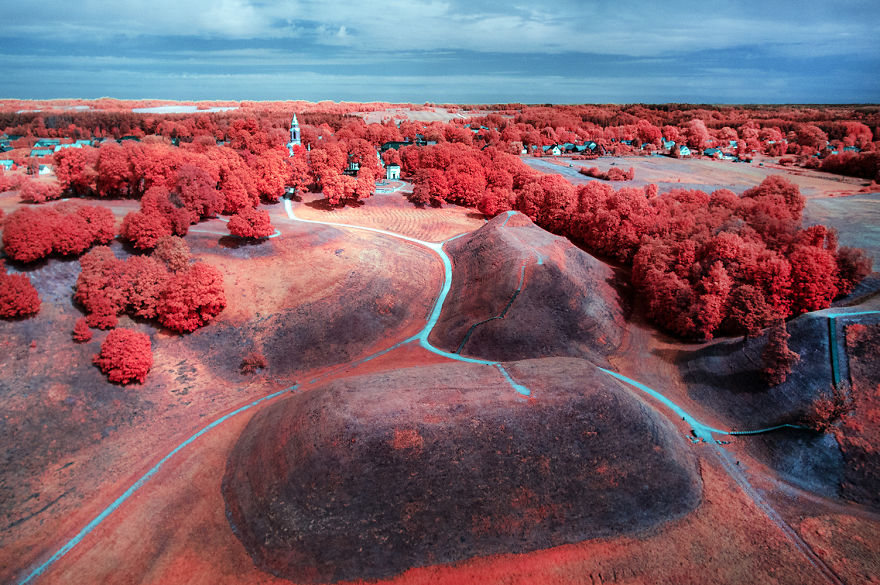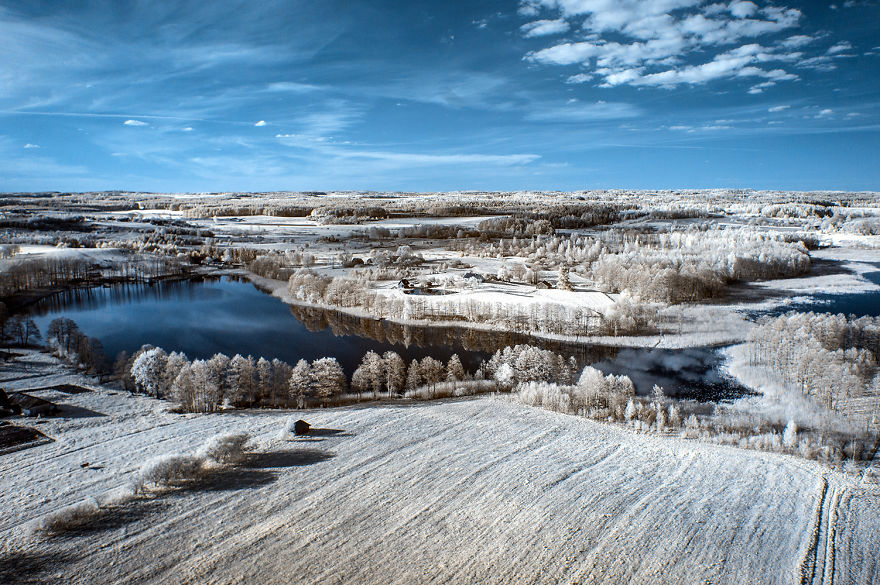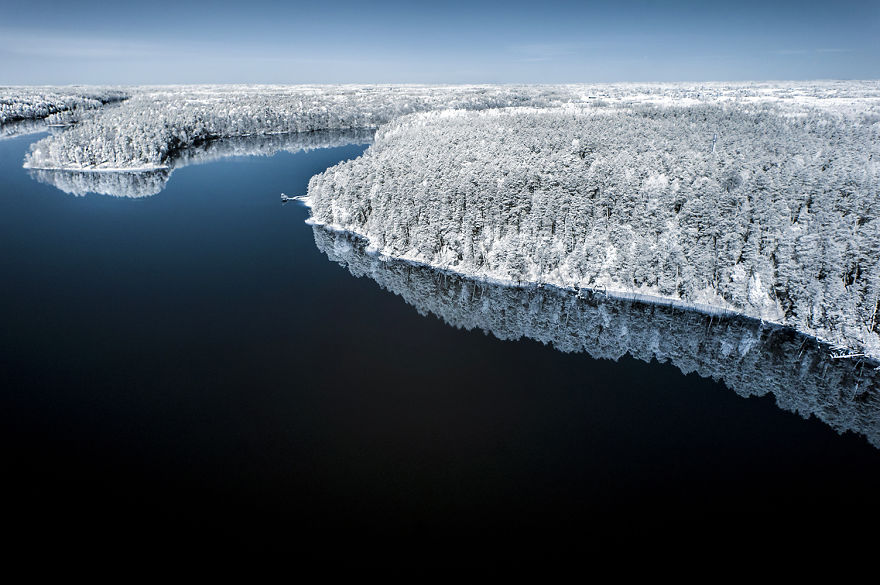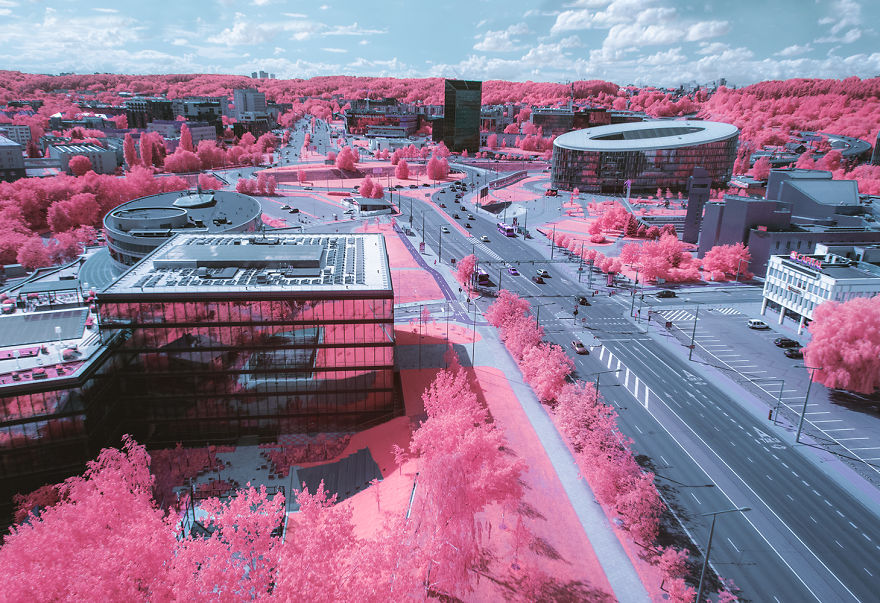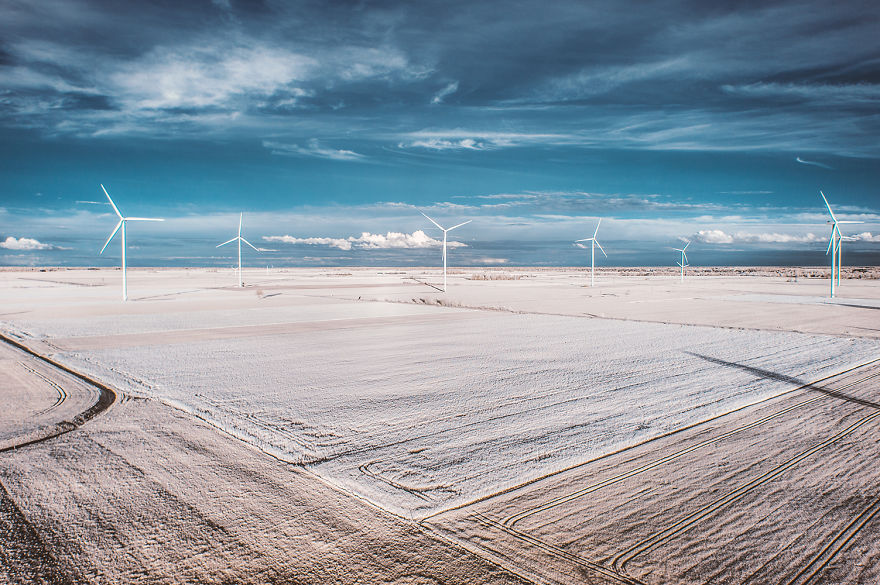
21 Otherworldly Photographs I Captured Using A Drone And An Infrared Camera
I have to admit, I have been fascinated with infrared photography since I learned about it almost 10 years ago. This year, I had a plan to take infrared photography up in the sky, so I looked for solutions. While modifying the drone cameras is a straightforward solution, it also would make the drone unusable for anything but infrared photography only. Therefore I looked for the lightest camera and found one which was modified for full-spectrum photography. This meant I could use it for any IR range I want (with a proper filter screwed on the lens) as well as revert it back to normal using a specific filter. I then bought the lightest wide-angle lens on market and my final setup weight was around 370 grams. Luckily, the drone managed to lift the camera without trouble, although the battery life was noticeably shorter.
More info: bluras.com | Facebook | twitter.com | Instagram | youtube.com
This post may include affiliate links.
The main issue I faced was the camera control—I could neither see what image I was taking, nor customize the settings. I set the focus manually, made sure the shutter button was always pressed (with the help of a rubber band and a random piece of plastic), and set the camera to an interval shooting mode. I was glad to get at least 1 usable shot after 20 minutes of flight. 2 successful shots would make my day. Due to the different nature of infrared photography, the exposure would change quite severely depending on the height of the sun and clouds. There were moments when I had badly overexposed or heavily underexposed images.
The bright side is that since you don’t see what images you get while you are flying, it is way more interesting to finish a flight and see what has been captured. I used two filters—550nm and 720nm—both of which gave me different results and created different moods. The former gave me some funky vaporwave colors, while the latter would produce incredibly deep blues, white foliage, and cut through any sort of smog.
Infrared images are low on contrast, therefore adjustments are needed to make a final image stand out.
There are more caveats, i.e. setting the right white balance. Set it wrong and you end up with a ruined image full of psychedelic colors. It is definitely a unique or even a weird photography genre and it might be a niche one, but it is worth trying it. After all, it reveals a world that is beyond human vision.
Notice how the hills gets darker - the infrared shows where grass has been damaged by the UV the most
I have a hard question for you! 😄 How many little huts can you see? 🏡
Sometimes Infrared photography can be eerily quiet and sort of haunting
Load More Replies...They all seem so quiet and peaceful, kind of makes me feel as distant from things as when you go under water at the pool.
Thanks! This is true - otherwordly quiet mood persists in IR images!
Load More Replies...They all seem so quiet and peaceful, kind of makes me feel as distant from things as when you go under water at the pool.
Thanks! This is true - otherwordly quiet mood persists in IR images!
Load More Replies...
 Dark Mode
Dark Mode 

 No fees, cancel anytime
No fees, cancel anytime 












